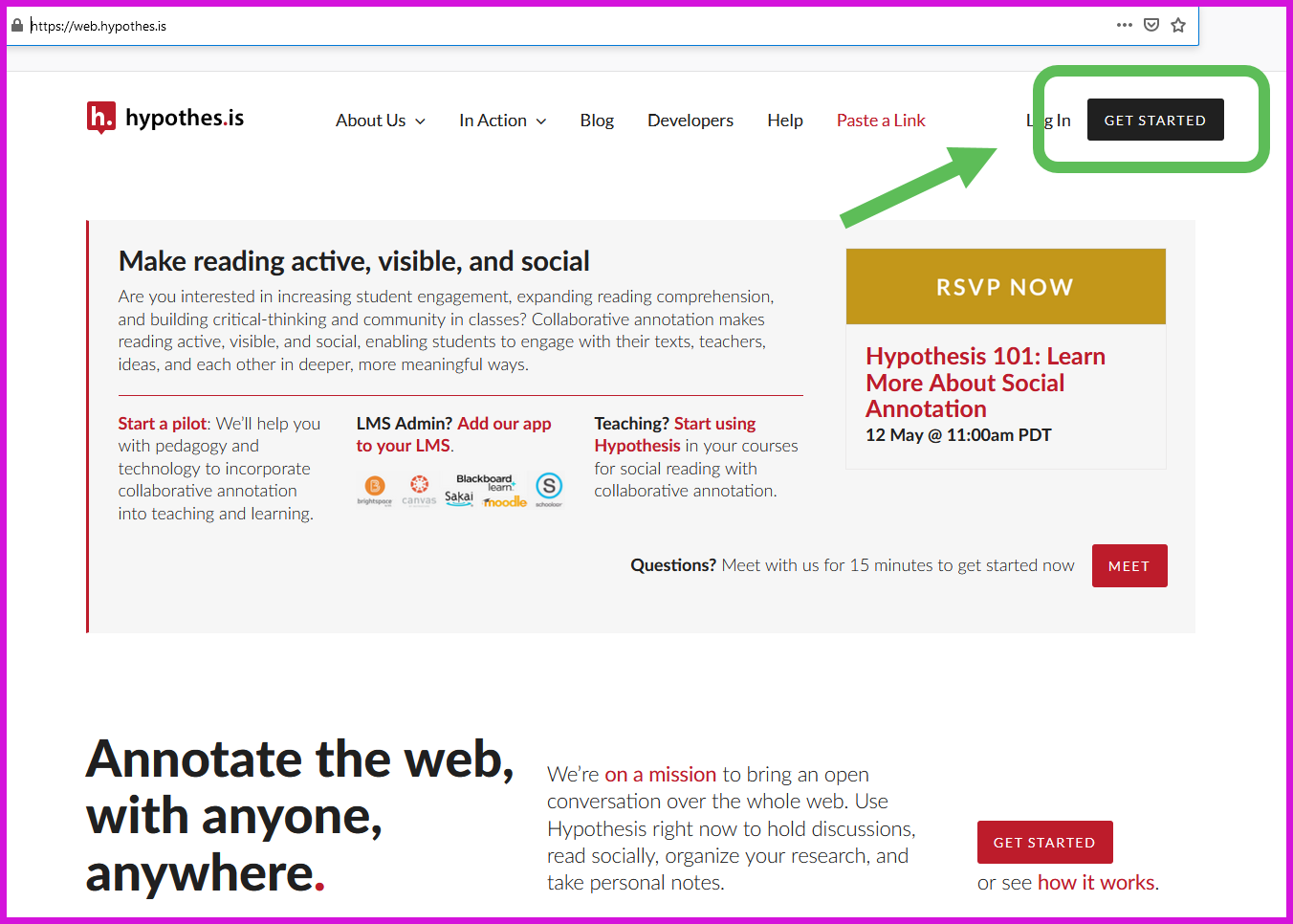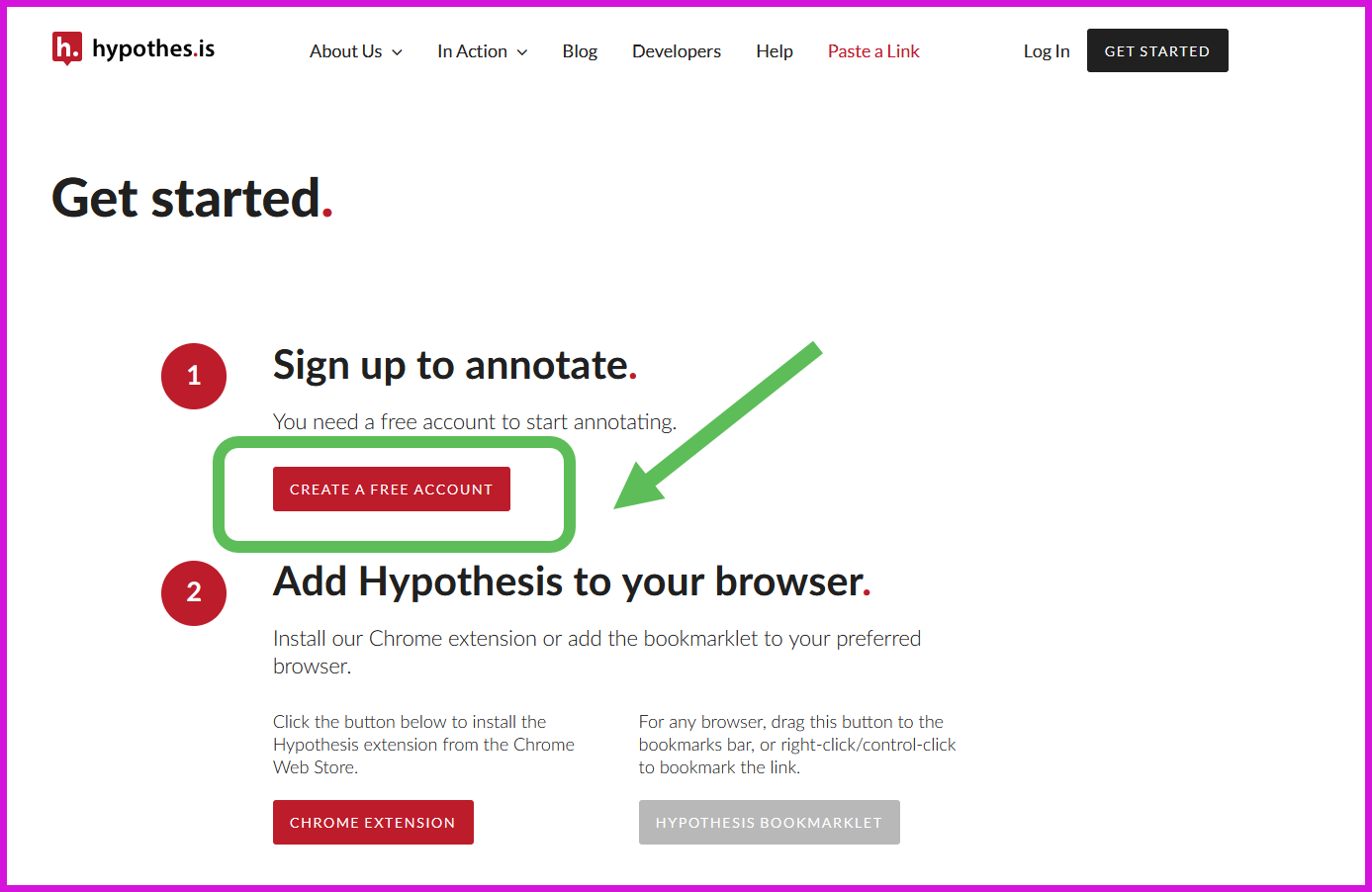3.3 Collaborative Learning
Example: Peer Review of Essays
Instructions:
STEP 1: Read the essays written by the peers in your group.
STEP 2: Review the essays using the form included below. Note the review happens using the web annotation tool Hypothesis, for which you will need to set up an account.
- STEP 2.1: Set up your own Hypothesis account following the TUTORIAL 1 below.
- STEP 2.2: Join our closed Hypothesis group by using this link: https://hypothes.is/groups/iLree3om/peer-essay-review-hawkins. (Note you will need to be logged in into your Hypothesis account).
STEP 2: Now back to the step of the review. Use the Hypothesis tool to complete the form for the review of the essay. If you need help, watch the 2nd tutorial below: How to review an essay by leaving Hypothesis annotations on the essay review form.
TUTORIAL 1: How to set up your Hypothesis account
1. Visit the Hypothesis website: https://web.hypothes.is/
2. Find the ‘Get Started’ Button on the top left
3. Create a free account.
4. Add Hypothesis to your browser.
Tutorial 2: How to use Hypothesis to leave annotations for peer review
Watch the brief video for instructions.
PEER REVIEW FORM
NAME __________________
ESSAY WRITER’S NAME ____________
TITLE OF ESSAY __________________
This peer review form requires you to read only the first two paragraphs and the bibliography of the essay. If you wish to read more and comment on it, you may do so, but it is not required. Question 16 is not required to be answered but can improve your review and help both the author of the essay and you when it comes to revising your own essay..
For help in answering these questions, please refer to the “Special Requirements” and “Pet Peeves” sections of the “Essay Information” handout and to the class on Essay Writing.
Please check Yes or No for each question. If Yes, where required, either type in the answer or cut and paste it from the essay into the answer space.
1. Does the introduction include the name of the play? Yes No If so, what is it?
2. Does the introduction include the author of the play? Yes No If so, what is it?
3. Does the introduction include the topic (i.e., the performance element) to be analyzed? Yes No_ If so, what is it?
4. Does the introduction include the specific examples of the performance element to be analyzed? Yes No If so, what are they?
5. Does the introduction state what the play is saying about the topic (.i.e, what the function of the performance element to be analyzed is, what larger topic it is being used to comment on)? Yes No If so, what is it saying?
6. Does the introduction state what the play is trying to persuade the audience to do in relation to the topic? Yes No If so, what is it?
7. Does the first body paragraph have an assertion (sometimes called a “claim” or a “warrant”) which the paragraph is designed to prove is true? Yes No If so, what is it?
8. Does the first body paragraph have an example from the play which is designed to prove that the assertion is true? Yes No If so, what is it?
- Does the first body paragraph have an explanation of how the example from the play proves that the assertion is true? Yes No If so, what is it?
- Does the first body paragraph have any other material in it? Yes No If so, what is it?
- If the first body paragraph has other material in it, should that material be:
A) retained because it helps to support the assertion Yes No
B) moved to a paragraph of its own Yes No
C) left out of the essay entirely Yes No
- Are there any “Pet Peeves” in the first two paragraphs? Yes No If so, what is it?
- Does the essay have a bibliography? Yes No
- Does the bibliography include the play itself in the assigned edition? Yes No
- Does the bibliography include all background works assigned to be read with the play? Yes No
- Do you have any suggestions for ways in which the writer could improve the essay? If so, what would you suggest?
Media Attributions
- 2021-05-12_12-02-16
- 2021-05-12_12-02-45
- HP2




